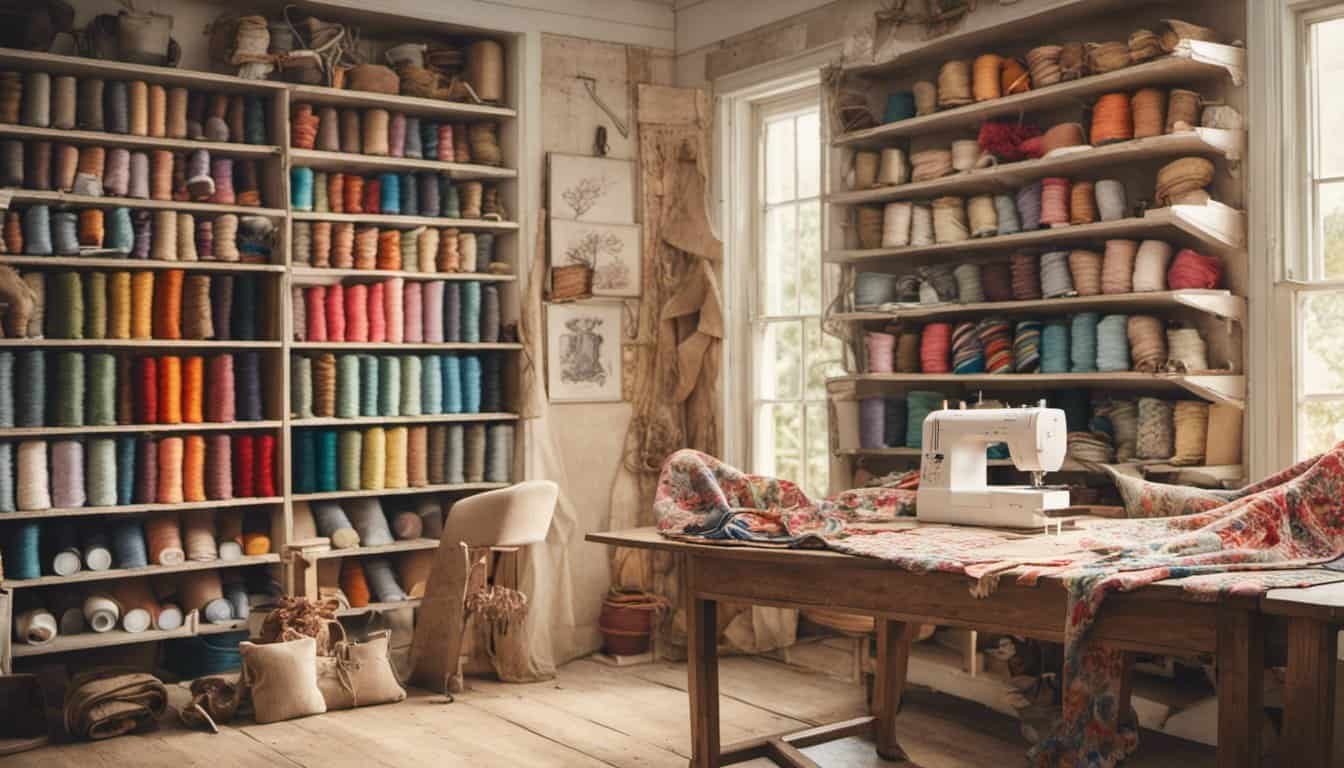There’s something magical about wearing a corset top—it instantly elevates any outfit, making it perfect for special occasions. Whether it’s a wedding, a formal event, or a night out, a well-fitted corset adds elegance and confidence to your look. But why settle for store-bought when you can create a custom piece that’s uniquely yours?
Materials And Tools Needed
Creating a corset top for special occasions requires careful preparation. Choosing the right materials and tools ensures a professional finish with lasting durability.
Fabric Selection For Corset Tops
I recommend medium to heavy-weight fabrics like satin, brocade, or coutil for the outer layer. These fabrics offer structure and elegance, perfect for formal events. For the lining, breathable materials like cotton or twill are ideal for comfort. If you’re adding embellishments, opt for lace overlays, sequins, or decorative embroidery, depending on your desired look.
Essential Sewing Tools And Supplies
Having the right tools simplifies the process. Essentials include a sewing machine with adjustable stitch settings, fabric scissors, and a rotary cutter for precise cuts. Good-quality pins or clips secure layers while sewing. A set of rulers, including a flexible tape measure, is necessary for accurate measurements. Boning materials, such as steel or synthetic boning, add structure and shape. Other supplies include grommets, an awl or grommet press, laces for fastening, and sturdy thread matching your fabric.
Choosing The Right Pattern
Selecting a well-fitted corset pattern is crucial. Look for commercial patterns or online options specifically designed for beginners or advanced levels, depending on your sewing experience. Pay attention to size guides to match bust, waist, and hip measurements accurately. Some patterns include seam allowances marked, making assembly easier. If you’re modifying a pattern, ensure all adjustments are symmetrical for balance.
Preparing Your Corset Top
Creating a well-fitted corset top starts with precise preparation. From accurate measurements to careful fabric cutting, taking these steps ensures a seamless sewing process and a polished final look.
Taking Accurate Measurements
I measure my bust, waist, and hips using a soft measuring tape, keeping it snug but not tight. For accurate results, I stand straight and wear appropriate undergarments. I write down the measurements and cross-check them with the selected corset pattern’s size guide to avoid fitting issues.
Cutting Your Fabric And Pattern
I pin the pattern pieces to the fabric, aligning the grainline following the instructions. Using rotary cutters or fabric scissors, I cut the fabric and lining layers carefully to ensure precision. To minimize errors, I double-check that each piece corresponds to the pattern before moving forward.
Marking Seam Allowances
I mark the seam allowances directly onto the fabric using tailor’s chalk or washable fabric markers. This step helps guide my stitching and ensures uniformity. I include notches and darts as indicated on the pattern, making assembly more efficient.
Step-By-Step Guide To Sewing A Corset Top
Once the fabric and pattern are prepped, it’s time to start constructing the corset top. Follow these steps to achieve a polished and well-fitted garment.
Assembling The Panels
I join the fabric panels by matching them according to the pattern’s guidelines. Placing the right sides of the fabric together, I pin along the edges where seams are required. Using a sewing machine, I stitch the panels, following the seam allowance markings made earlier. Pressing the seams open as I go ensures a smooth, professional look. For double-layered corsets, I repeat this process for both the outer fabric and the lining.
Adding Boning For Structure
To support the corset’s shape, I add boning to the designated channels. After marking the boning placement on the lining fabric, I sew channels by stitching parallel lines where indicated in the pattern. I measure and cut the boning material, ensuring each piece matches its channel length. Carefully sliding the boning into the channels, I secure the ends by sewing the openings closed.
Creating The Lacing Back
For the laced back, I install grommets along the back panels’ edges. Marking the placement with a ruler ensures evenly spaced grommets, typically 1 to 1.5 inches apart. Using a grommet tool, I punch holes through the fabric, then attach the grommets securely. I thread a ribbon or cord through the grommets in a crisscross pattern, adjusting it to allow for tightening or loosening when worn.
Sewing The Hem And Finishing Edges
To give the corset a neat finish, I fold the raw edges of the fabric inward and sew along the hemline. Bias tape can also be added for a polished edge. I ensure each seam is clean and every edge securely stitched. A final press with an iron keeps the fabric crisp and ready to wear. Adding decorative trims or embellishments like lace or beading can further customize the corset for special occasions.

Tips For Customizing Your Corset Top
Customizing a corset top can make it truly unique and personal for any special occasion. I focus on details and tailoring techniques to create a personalized fit and style.
Adding Decorative Elements
Incorporating decorative elements makes a corset top stand out. I often sew lace appliqués, beadwork, or embroidery onto the outer fabric for added elegance. For formal events, I’ve used rhinestones or sequins to enhance glamour. Choosing complementary colors or metallic threads ensures these details align with the outfit’s theme. To match specific styles, I occasionally experiment with contrasting fabrics like velvet panels or patterned insets.
For borders, I like using trims such as ribbon, fringe, or piping. For example, satin ribbon-bound edges offer a polished finish suited for weddings, while fringe pairs well with vintage looks. Attaching these elements requires careful sewing to prevent pulling or damage.
Adjusting For A Perfect Fit
Adjusting the fit of a corset ensures comfort and enhances its shaping effect. I prioritize refining the bust, waist, or hip areas by making adjustments at the seam allowances or darts before attaching boning. Repeated fitting during assembly lets me identify where loosening or tightening is needed.
When necessary, I adjust grommet placement for proper lacing tension. I’ve found spacing grommets closer together provides more support and control. Adding modesty panels behind lacing also ensures coverage without sacrificing style.
« Making a Leather Wallet: A DIY Guide to Crafting Your Own Stylish Masterpiece at Home
How to Make a Fabric Plant Hanger: Easy DIY Tutorial to Elevate Your Plant Game »
By focusing on both decoration and adjustments, a corset top not only fits beautifully but also reflects personal taste flawlessly.
Common Mistakes And How To Avoid Them
Creating a corset top for special occasions requires attention to detail. Mistakes in measurements, construction, or fabric choice can affect its fit and look. Here’s how to spot and avoid these pitfalls.
Incorrect Measurements
Taking inaccurate measurements impacts fit significantly. I ensure the bust, waist, and hips are measured correctly using a soft tape while standing straight. Wearing the right undergarments during this step is essential for accuracy. To avoid errors, double-check each measurement and compare it to the pattern’s size guide. If in doubt, I recommend making a mock-up or toile to test the fit before cutting the main fabric.
Misplacing Boning Channels
Improper placement of boning channels can distort a corset’s structure. I always follow the pattern’s marking or draft my own based on the corset design. When sewing the channels, I ensure they’re evenly spaced and align with the seams. Uneven channels often cause buckling or discomfort. Checking alignment frequently while sewing and inserting boning ensures smooth results.
Choosing The Wrong Fabric
Unsuitable fabric affects both durability and appearance. I select medium to heavy-weight fabrics like satin, brocade, or twill for the outer layer, as they provide stability. For lining, breathable fabrics like cotton work best. Stretchy or lightweight materials compromise support and structure, so I avoid them altogether. Testing fabric stiffness and matching it to the design improves both style and performance.

Styling Your Corset Top For Special Occasions
Styling a corset top transforms it into a centerpiece for special occasions. Combining it with the right accessories and outfits creates a cohesive and stunning look.
Pairing With Accessories
Accessories elevate the elegance of any corset top. Statement necklaces, especially chokers or pendants, draw attention to the neckline and frame the face beautifully. Earrings, such as crystal studs or dangling designs, add a touch of sophistication. For additional flair, I suggest pairing a corset top with a bejeweled or velvet belt to accentuate the waistline further.
Clutches and handbags should complement the fabric and embellishments of the corset. Satin or sequined clutches work well for formal events. When it comes to footwear, heels like stilettos or wedge sandals elongate the legs and enhance posture. For balance, avoid overly ornate shoes if the corset top is heavily decorated.
Coordinating With Different Outfits
Corset tops offer versatility for various outfit combinations. For formal events, pairing them with long, flowy skirts made of chiffon or satin creates a romantic silhouette. To keep it more structured, match a corset top with a tailored pencil skirt or trouser for an elegant, modern look.
When styling for less formal occasions, I find that high-waisted jeans or wide-leg pants provide a chic yet relaxed option. Adding a blazer or shrug enhances the ensemble while providing additional coverage. For evening events, layering a sheer or lace wrap over the corset top can add a touch of drama and refinement.

Conclusion
Sewing a corset top for special occasions is such a rewarding experience. Not only does it allow you to create something truly unique, but it also gives you the chance to showcase your personal style and craftsmanship. With the right materials, tools, and attention to detail, you can design a piece that’s both stunning and comfortable to wear.
Whether you’re preparing for a wedding, a formal event, or just want to elevate your wardrobe, a custom corset top adds that perfect touch of elegance. So grab your fabric, get creative, and enjoy the process of bringing your vision to life. You’ve got this!

















